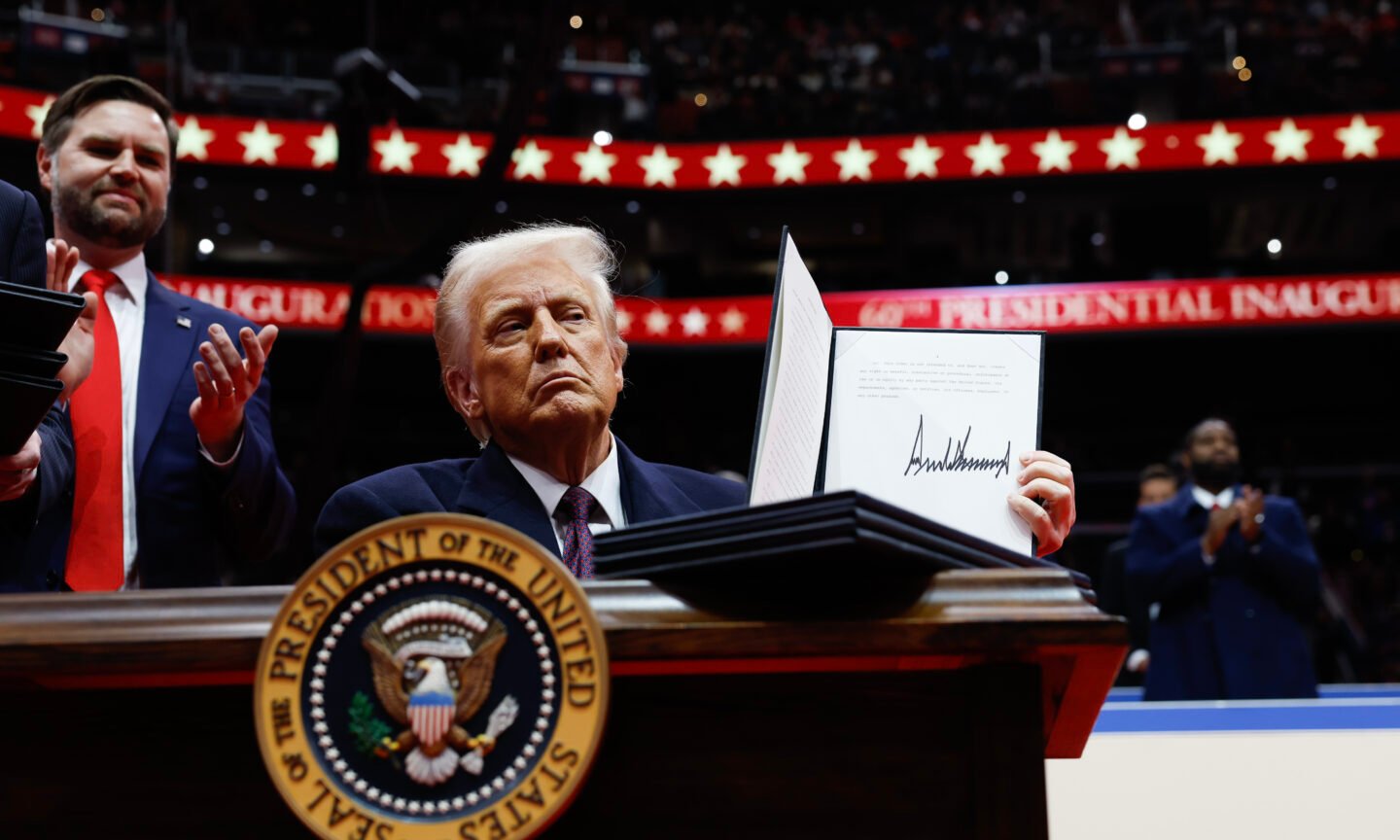President Donald Trump made hundreds of “day one” pledges while campaigning, but they didn’t all materialize. That said, it’s only the first week of Trump’s presidency and he has a long list of plans he wants to enact in his first 100 days in office and beyond.
On Trump’s first day as president, he made 26 executive orders, in total — a few of which have already been met with legal actions. In one order he pulled back nearly 80 executive orders made by former President Joe Biden, including a recent effort to lower Medicare and Medicaid drug costs.
Trump’s first set of orders run the gamut, but several could impact the economy and your personal finances. Here’s a few that made the cut.
Agencies must take action to lower prices
Trump ordered the heads of executive departments and agencies to deliver price relief to Americans. The order listed a number of actions, albeit vague ones, that departments should take to lower costs. That could include:
-
Lowering the cost of housing and expanding supply.
-
Getting rid of red tape and “rent-seeking practices” that lead to higher health care costs.
-
Nixing “counterproductive” requirements that increase home appliance costs.
-
Creating more job opportunities, including those that bring back “discouraged workers.”
-
Eliminating “harmful, coercive” climate polices in order to lower the costs of food and fuel.
The order requires department and agency heads to report back within 30 days with updates and then every 30 days thereafter.
‘Unleash’ U.S. energy production
Trump signed a number of executive orders aimed at expanding U.S. energy dominance and lowering prices for consumers. Most notably, Trump declared a national energy emergency, which allows his administration to use “emergency authorities” to cut through red tape and expand domestic energy production and transportation.
It’s worth noting that presidents can’t control gas prices. Their policies might have some influence but it often takes years to materialize as domestic companies act on the changes and take into account global market dynamics.
Another of Trump’s executive orders signed Jan. 20 takes steps to open opportunities to extract more of Alaska’s natural resources by:
-
Maximizing natural resource development and production on federal and state lands.
-
Expediting permitting for energy and natural resource projects.
-
Prioritizing the growth of the state’s liquified natural gas industry.
Another order outlines broad energy policy meant to encourage production and limit regulations. It seeks to:
-
Expand off-shore exploration and drilling.
-
Grow production of non-fuel minerals, including rare earth minerals.
-
Eliminate motor vehicle regulations that promote the adoption of electric vehicles over gas-powered cars and trucks.
-
Remove rules that limit the kinds of consumer goods and appliances available, including light bulbs, dishwashers, washing machines, gas stoves, water heaters, toilets and shower heads, among others.
In other energy-related moves, Trump issued a memo that temporarily stops the federal government from granting new or renewed leases for off-shore wind energy projects. He also pulled the U.S. out of the Paris Climate Agreement.
Pulls the U.S. out of global tax deal
Trump declared that the Organization for Economic Cooperation and Development (OECD) Global Tax Deal, which went into effect early in 2024, “has no force or effect,” in the U.S. The deal, which Biden arranged with nearly 140 countries in 2021, applied a minimum tax on corporate income in every country where a company operates.
Trump’s action effectively means the U.S. is no longer part of the deal. He also instructed the U.S. Treasury to prepare “protective measures” against countries that plan to or have already instituted tax rules that would impact companies in the U.S.
No mass deportations yet, but added border restrictions
Trump didn’t yet order mass deportations as he pledged to do on day one, but he did take several executive actions that could impact citizenship, southern border security, as well as the future for undocumented immigrants in the United States. Economists say undocumented immigrants play a critical role in the U.S. labor force. The orders include:
-
Declaring a national emergency at the southern border and securing the border with physical barriers and additional personnel. He also made an order empowering the military to take action at U.S. borders.
-
Barring asylum for new arrivals at the southern border and halting the Refugee Admissions Program.
-
Ending birthright citizenship for future children born in the U.S. to parents who are undocumented immigrants. This order contradicts the 14th Amendment of the Constitution, which states that “All persons born or naturalized in the United States, and subject to the jurisdiction thereof, are citizens of the United States and of the State wherein they reside.” The president does not have the power to overrule or change a constitutional amendment and 18 states have already sued to stop the action.
No tariffs, but a close look at trade deals
Trump did not impose new tariffs on U.S. trade partners, but he laid the groundwork for future actions.
In a memo, he directed his cabinet to investigate trade deficits, as well as review trade policies and agreements. Trump also called on the departments of Commerce and Homeland Security to look into the feasibility of establishing an External Revenue Service whose primary purpose would be to collect trade-related revenue.
Separately, Trump told reporters he could enact 25% tariffs on Canada and Mexico as soon as Feb. 1. He also said he “may” impose across-the-board tariffs, as he promised during his campaign, “but we’re not ready for that just yet.”
(Photo by Anna Moneymaker/Getty Images News via Getty Images)

